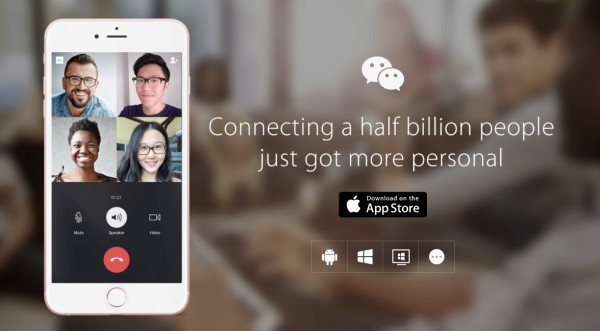WeChat a must for western brands in China
September 7, 2020Messaging app WeChat is something of a phenomenon. With around 600 million users, it is the largest standalone messaging app, and is currently ranked the fifth most popular mobile app in the world by Global Web Index, behind only Google Maps, G+, YouTube, and Facebook.
The strength of its reach and influence is such that brands looking to get a foothold in China seriously have to consider it within their mobile strategy for China, sometimes even leading with WeChat before they embark on their own applications, which have to be downloaded from an app store.
Native apps still play a role, but the decision to build one in China has to include a discussion around WeChat.
Some advantages of using WeChat versus a Native app are:
Using an Established, Trusted Medium for the Initial Brand Message
WeChat has an active, already enthusiastic audience – they are familiar with the structure, are happy to start a dialogue with other users (whether brands or individuals), and have an inherent trust of the content because they see it every day.
Provided brands take steps to ensure they become part of the fabric of WeChat (working within their parameters and protocols), they will have the opportunity to access a wide range of potential customers and rapidly build their profile.
And with the recent announcement of WeChat sponsored ads, reaching an audience might be easier.
Working With Built-In Promotional and Transactional Functions
There are a number of ways to promote products and services on WeChat, from mini apps to seeding with key opinion leaders (KOL), offering a natural, comfortable user experience.
WeChat is keen to leverage brand interest as an efficient way to monetize the app, and has developed its own commercial “Shop” feature, which allows verified brand accounts to set up and manage their own stores.
Offering product upload and display, order and customer complaint management, as well as an integrated WeChat payment facility, it comes at a cost of around $5,000 – a relatively small price to pay for what it brings in the way of exposure and brand equity.
For larger brands wanting to establish a transactional presence without the need to develop costly individual platforms, WeChat allows businesses to build functionality for transferring funds, making bookings, managing accounts, and so on into their WeChat app – very useful for financial service providers, retailers, and travel companies.
China Southern is a brand which demonstrates this very well, investing in functions to book and pay for flights, check airmile allowances, and book seating.
A Unique Presence in a Vibrant Territory
While Twitter and Facebook are attempting to get in on the in-app selling act with “buy” buttons, sponsored news, and a variety of other commercial activities, WeChat is currently unlike any messaging or social platform in the West when it comes to commercial features.
Thanks in part to an audience with a huge appetite to buy online (according to PwC, 53 percent of Chinese consumers shop online at least once a week, with a transactional value set to hit around $400 billion next year) and a sophisticated range of easily accessible features, it is unique in its ability to offer seamless sales within a well-established ecosystem.
There’s no doubt that WeChat is currently the “darling” of the app world, and it is stimulating debate both in Asia and the rest of the world about the value of building native apps when you are able to create a digital product that has a captive audience to seed, too.
The overriding view, from what we are seeing is around control and ownership. WeChat is an incredibly powerful tool for brands, and it should play a role in a brand’s Chinese market strategy, but for bigger brands, who have scale, their own native app is 100 percent in their control. They can design it and update it as and when they want, and they can introduce any features they want.
For WeChat, there is a lot of flexibility, but for any custom build, you will require WeChat review and approval, hence you lose some control over time to market. The best mobile strategy would see a brand leverage WeChat, mobile Web, and native apps. However, for those who cannot afford a multi-mobile channel strategy, the decision on priorities should be closely evaluated.
Elisa Harca is the regional director of Red Ant Asia.

